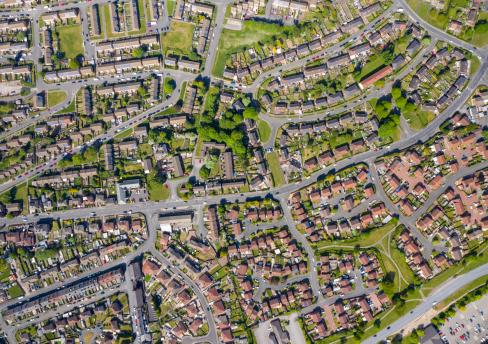As those of you who have an interest in developments in property law may be aware, the Land Registration etc (Scotland) Act 2012 Act ("Act") came into force in December 2014. It changed a great deal of property law and practice, including certain aspects of the process of land registration in Scotland.
Increase in voluntary registrations
The Scottish Government are keen to have all Scottish property on the Land Register as soon as possible. The Act includes more circumstances of compulsory land registration than applied under the old rules - and the Scottish Government are also putting in place policies to encourage voluntary registration, including discounted fees. We are now therefore seeing increased client interest in voluntarily registering their existing titles in the Land Register for the first time.
Property owners are often surprised at the various complexities that can arise on a voluntary registration, and indeed on any first registration, some of which were discussed in Amy Entwistle's article in February 2015.
Cadastral map
One important issue is the need to make sure that the title being registered can be suitably plotted on the new cadastral map, which is a single unified map of all registered property in Scotland. This map is based on the ordnance survey map.
Accurate plotting is often not straightforward as many old titles have inadequate plans. Some don't link the position of the land shown on the plan to any other physical feature e.g. adjacent roads or other properties. This is sometimes called the "floating rectangle". Some old titles don't even have plans and the written descriptions might be insufficient. It is not unusual for an old deed relied upon for a description to describe the boundary of a property as the "the hedge belonging to Mr Smith". That's where plans reports come in.
Plans reports
Plans reports are primarily used in cases of first registration (whether voluntary or otherwise) where a plot of land is to be registered in the Land Register for the first time. However, they are also used in other contexts e.g. forming part of a solicitor's title check in most sales or re - finance transactions. They can also be used as part of an initial scoping exercise so that the solicitor and client can get a better idea of the work involved, realistic timescales and of course, a steer towards costs at the start of a transaction.
There are 3 different levels of plans reports. Which level is appropriate will depend on circumstances and the complexity of the transaction.
Level 1
This is the most basic level of report and provides a simple comparison between the plan provided by the solicitor and the cadastral map used by Registers of Scotland.
Currently costing £35 + VAT, this report will disclose any conflicts between the deed plan and the cadastral map.
A level 1 report would flag e.g. where the plan submitted by the solicitor conflicts with titles to other property that have already been registered, and so plotted on the cadastral map. If any conflicts are identified, these would obviously have to be dealt with before the land in question could be registered.
However, a level 1 report does not make any comment on the suitability of the plan for registration and is therefore only used in limited circumstances.
Level 2
Registers of Scotland refer to this report as the standard report that precedes applications for first registration.
Currently costing £45 + VAT, this report will confirm:
- if the property can be identified
- whether there are any registered titles affecting the property and
- whether there are any conflicts with existing cadastral units.
Level 3
This is an enhanced report and, in practice, seems to be the most popular level so far, probably because it is the most comprehensive and, at the current charge of £55 + VAT, doesn't cost much more than the other levels of reports.
This report does everything the level 2 report does but it also provides a plan showing the extent of any conflicts identified in addition to providing other useful information such as registered servitudes or burdens affecting the property.
Usefulness of the plans reports
So, for a modest fee, a solicitor can order one of the three levels of plans reports available and satisfy themselves whether there are any underlying issues with the plan/boundaries of the property in question. If there are any issues, it’s obviously preferable to know about these as soon as possible so that there is enough time to address and resolve them.
Failing to order a plans report soon enough or even submitting an application for first registration without having had sight of a plans report, runs the real risk that you will not have enough time to address potential issues prior to settlement or, indeed, that your application might be bounced due to some discrepancy of which you were unaware.
If you'd like to speak with us, please contact our Real Estate team.
The content of this webpage is for information only and is not intended to be construed as legal advice and should not be treated as a substitute for specific advice. Morton Fraser LLP accepts no responsibility for the content of any third party website to which this webpage refers. Morton Fraser LLP is authorised and regulated by the Financial Conduct Authority.










